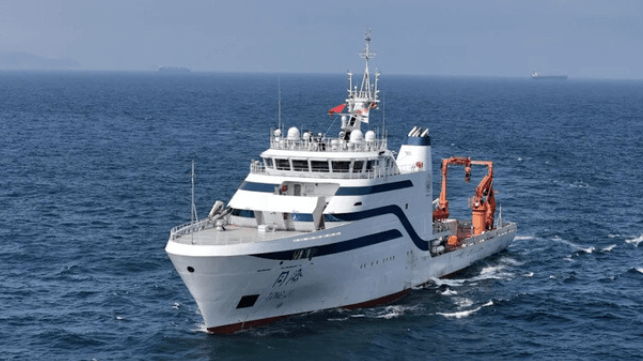China Gets its First "Intelligent" Deep-Sea Research Ship

China has added a new vessel to its rapidly growing fleet of civilian research ships. On Sunday, a Chinese research institute took delivery of the research vessel Tongji, which its builder calls the first “intelligent deep-sea research ship” for the country. The vessel has been under construction since last year at Huangpu Wenchong shipyard in Guangzhou, and it completed sea trials in May.
The vessel will be operated by the Shanghai-based Tongji University and will become China’s leading scientific research platform in the East China Sea. Tongji is scheduled to embark on its maiden expedition to the South China Sea in August, which will last for a month, according to local media reports.
The 2,000-ton Tongji has a domestically-made diesel-electric propulsion system. It is the first research vessel in China to be classified as an Intelligent-ship (I-ship) under the standards of China Classification Society. Some of the vessel’s “intelligent” features include shore based remote control, autonomous navigation in open waters, intelligent energy efficiency management and intelligent integration platform. (Artificial intelligence is a guiding priority for China’s top political leadership.)
Tongji measures 81.5 meters long and has a draft of 6.9 meters. It can reach a speed of 15 knots and has capacity to accommodate 45 people, including 30 scientists. In addition, the vessel has a laboratory area of 320 square meters and can support a range of marine engineering operations, including cable laying and maintenance.
Chinese research vessels have attracted scrutiny around the world over suspicions of a dual civil-military mission set. Historically, China used its research vessels to survey waters within its EEZ. But this has changed in the last three years, with Chinese research vessels venturing out more in the Western Pacific and the Indian Ocean, focusing on areas that are likely of interest to China’s military. They have also attracted attention in the South China Sea, particularly in the western Philippine exclusive economic zone, where Chinese government vessels are closely watched by the Philippine Coast Guard.
